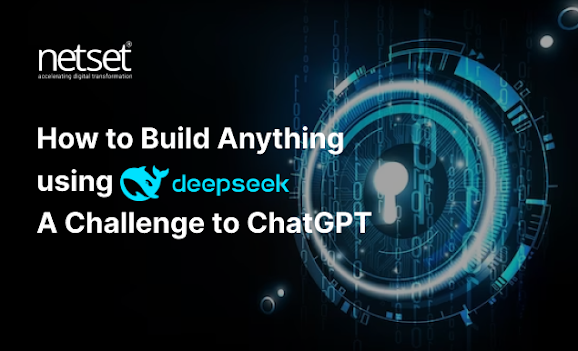The DeepSeek R1, a powerful open-source language model, can be leveraged to build various applications, from chatbots to content generation tools, code assistants, and more. Here's a step-by-step guide to building applications with DeepSeek R1:
1. Understand DeepSeek R1 Capabilities
DeepSeek R1 offers:
Strong natural language understanding (NLU) and generation (NLG).
Multimodal capabilities (if available).
Support for multiple programming languages.
Fine-tuning and customization potential.
2. Setting Up the Environment
To build applications with DeepSeek R1, you need to set up a development environment that includes:
a. Hardware Requirements
For local deployment: A GPU-enabled machine (NVIDIA CUDA support recommended).
Cloud options: Google Colab, AWS, Azure, or Hugging Face Spaces.
b. Software Dependencies
Ensure you have the following installed:
bash
CopyEdit
# Install Python and virtual environment
sudo apt install python3-pip
pip install virtualenv
virtualenv deepseek_env
source deepseek_env/bin/activate
# Install required libraries
pip install torch transformers deepseek
3. Download or Access the Model
You can access DeepSeek R1 in multiple ways:
Hugging Face Model Hub:
Python
CopyEdit
from transformers import AutoModelForCausalLM, AutoTokenizer
model_name = "deepseek-ai/deepseek-r1"
tokenizer = AutoTokenizer.from_pretrained(model_name)
model = AutoModelForCausalLM.from_pretrained(model_name)
input_text = "How can I use DeepSeek R1?"
inputs = tokenizer(input_text, return_tensors="pt")
outputs = model.generate(**inputs, max_length=200)
print(tokenizer.decode(outputs[0]))
API Access (if available) Check if DeepSeek offers an API, similar to OpenAI:
Python
CopyEdit
import requests
url = "https://api.deepseek.ai/v1/chat/completions"
headers = {"Authorization": "Bearer YOUR_API_KEY"}
data = {
"model": "deepseek-r1",
"messages": [{"role": "user", "content": "Tell me a joke"}],
}
response = requests.post(url, json=data, headers=headers)
print(response.json())
4. Application Ideas with DeepSeek R1
You can build various applications using DeepSeek R1:
a. Chatbots and Virtual Assistants
Deploy chatbots for customer service or personal use.
Example using Flask:
Python
CopyEdit
from flask import Flask, request, jsonify
from transformers import AutoModelForCausalLM, AutoTokenizer
app = Flask(__name__)
model_name = "deepseek-ai/deepseek-r1"
tokenizer = AutoTokenizer.from_pretrained(model_name)
model = AutoModelForCausalLM.from_pretrained(model_name)
@app.route("/chat", methods=["POST"])
def chat():
data = request.json
input_text = data.get("message")
inputs = tokenizer(input_text, return_tensors="pt")
output = model.generate(**inputs, max_length=200)
return jsonify({"response": tokenizer.decode(output[0])})
if __name__ == "__main__":
app.run(debug=True)
b. Content Generation (Blogs, Ads, Summaries)
Generate product descriptions or blog content.
Example:
Python
CopyEdit
prompt = "Write an engaging blog post introduction about AI in 2025."
inputs = tokenizer(prompt, return_tensors="pt")
output = model.generate(**inputs, max_length=500)
print(tokenizer.decode(output[0]))
c. Code Generation & Assistance
Build an AI-powered coding assistant.
Example using the model to generate Python code:
Python
CopyEdit
prompt = "Write a Python function to sort a list of numbers."
inputs = tokenizer(prompt, return_tensors="pt")
output = model.generate(**inputs, max_length=100)
print(tokenizer.decode(output[0]))
d. Translation and Summarization
Use for document summarization or multi-language translations.
5. Fine-Tuning DeepSeek R1 for Custom Use
If you have specific datasets and want to fine-tune the model:
Python
CopyEdit
from transformers import Trainer, TrainingArguments, AutoModelForCausalLM
# Load pre-trained model
model = AutoModelForCausalLM.from_pretrained("deepseek-ai/deepseek-r1")
# Prepare dataset (e.g., in JSONL format)
train_args = TrainingArguments(
output_dir="./results",
evaluation_strategy="epoch",
save_strategy="epoch",
learning_rate=5e-5,
per_device_train_batch_size=8,
num_train_epochs=3,
)
trainer = Trainer(
model=model,
args=train_args,
train_dataset=train_dataset, # Your fine-tuned dataset
)
trainer.train()
6. Deploying Your Application
Once you've developed your application, you can deploy it using:
Web frameworks: Flask, FastAPI, or Django.
Cloud deployment: AWS Lambda, Google Cloud Functions, or Dockerized deployments.
Mobile apps: Integrate into mobile apps via REST API endpoints.
7. Performance Optimization
To optimize model performance:
Use quantization techniques for smaller models with torch.quantization.
Use batching for multiple requests.
Fine-tune for specific use cases to reduce latency.
8. Monitoring and Scaling
Ensure efficient operations by:
Tracking API usage with logging tools like ELK stack.
Auto-scaling using Kubernetes or serverless platforms.
Conclusion
By following these steps, you can build various AI-powered applications with DeepSeek R1, whether it’s for chatbots, content creation, coding assistance, or analytics. Experiment with prompt engineering, fine-tuning, and deployment strategies to maximize the potential of this powerful model.


No comments:
Post a Comment